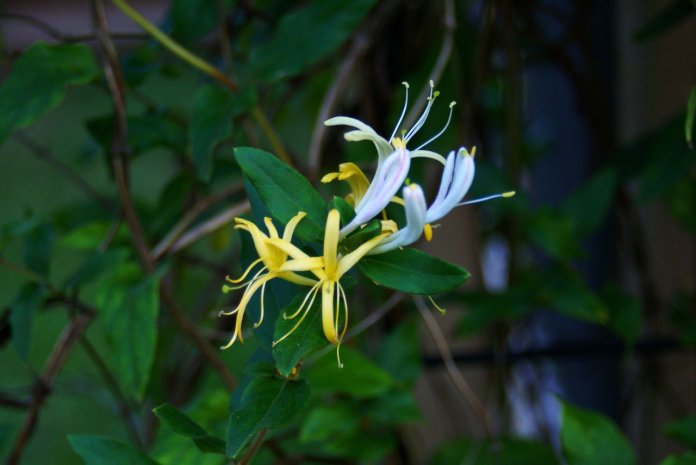Page Contents
Description
Honeysuckle is very much a plant of Northern Europe, including Britain; honeysuckle can also be found growing wild in North Africa and Western Asia. Although it seems unlikely, it does have a history of herbal use, being listed in Gerard’s herbal: ‘the floured, steeped in oil and set in the sun, are good to anoint the body that is benumbed and grown very cold’.
Culpeper regarded it as a hot martial plant in the sign of Cancer, the leaves being put into gargarisms for sore throats, and it was another of the ‘Dioscorides’ plants for curing the hiccups. It is, of course, grown above all for its fragrance, and was one of those flowers listed by Francis Bacon in his essay Of Gardens’ whose ‘breath’ is far sweeter in the air than in the hand, honeysuckles being included in the list,’so they are somewhat afar off.
Cultivation
Honeysuckle likes its feet in the shade and its head in the sunshine; grown in too sunny or too warm a place, it becomes infested with greenflies, blackflies, caterpillars, and red spider mites. Ordinary soil, reasonably moist and fertile, with an alkaline tendency, will be suitable, and a position against a north or west wall is ideal, or on the shady side of supports such as tree stumps, poles, and pergolas. It will twine around its support after being directed towards it. Planting is in autumn-spring, and the increase is by hardwood cuttings in autumn or by layering late summer, or autumn. If pruning is needed, do this in early spring.
Identification
Height: 3-6 m (10-20f)
Root fibrous, anchoring, wide-spreading
Stem twining, tough, rambling over bushes, up hedgerows and trees Leaf oval to oblong, simple, untied in pairs, upper ones stalkless but not united, dark green, 4-6 cm (1%-2 to 2in) long.
Flower creamy yellow, purplish on the outside, long slender tube 5 cm (2in), ending in 2-lobed lip 2.5 cm wide, very sweetly fragrant, in clusters at the end of shoots, June to October
Seeds: cream-colored, contained in globe-shaped red berries.
Honeysuckle Uses
Culinary flowers formerly used as soothing syrup
Medicinal Flowering plant for skin infections; berries are poisonous
Cosmetics not so used
Domestic not so used
Fragrance and Aroma flowers are strongly scented, for potpourri, herb pillows, and perfumery.
Prescription
Syrup of honeysuckle is for the relief of a sore throat. This is a modern version of a recipe in A New Family Herbal by Richard Brooks, 1871. 75g/30z/2/4 cups fresh honeysuckle petals 300ml/’2 pint/1% cups boiling water 100g140zl2 cup sugar
Lightly crush the honeysuckle leaves before pouring boiling water over them. Leave to get cool, and then strain the liquid into a saucepan. Add the sugar and bring it slowly to a boil. Leave to simmer gently until the mixture is of a syrupy consistency. This is to cool slightly, and then pour into a bottle or jar and seal.
OTHER NAMES: Woodbine
